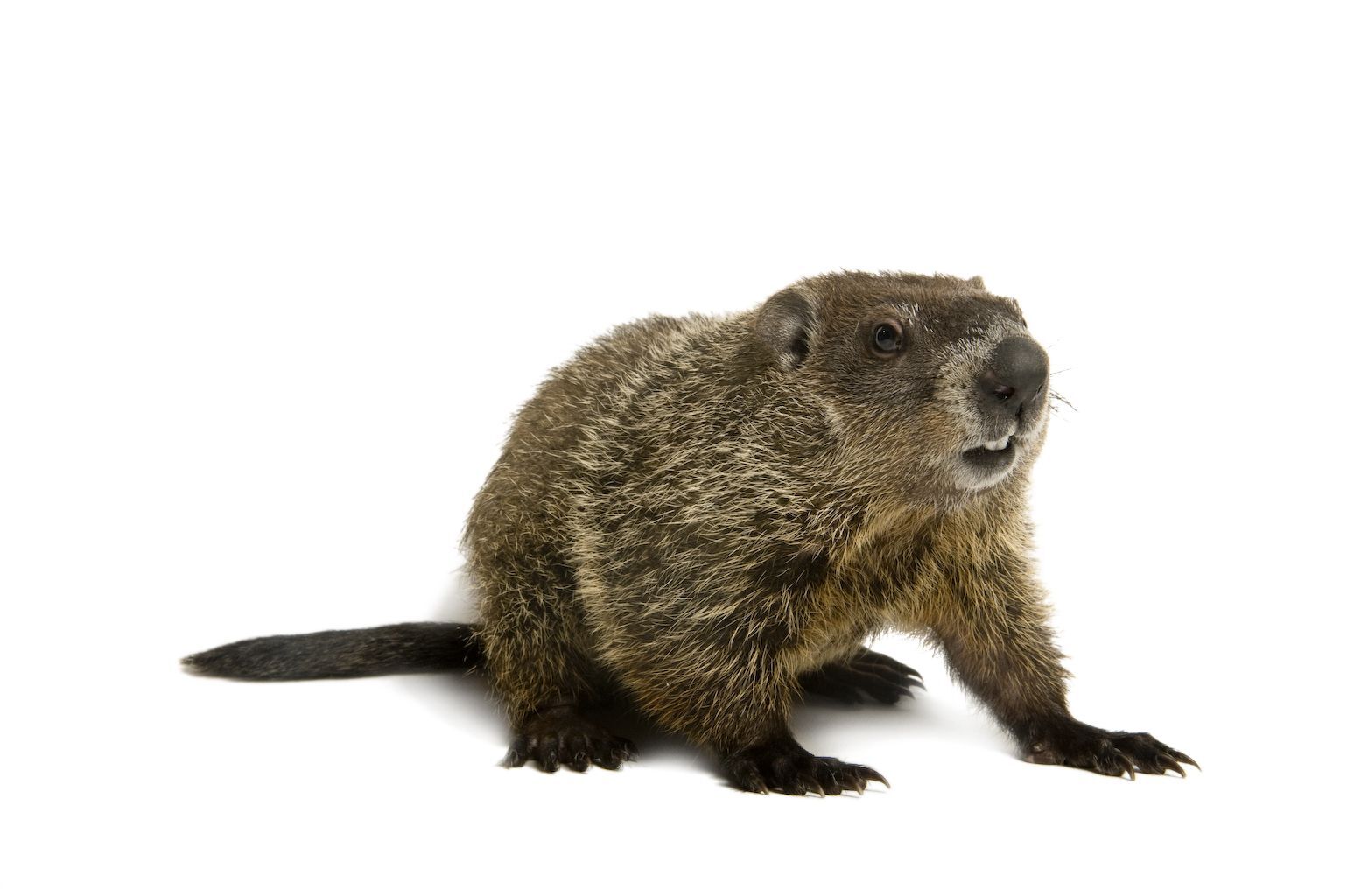About Woodchucks
The woodchuck, or groundhog, is one of the most common mammals in eastern Nebraska, but is still improperly identified by many people as a gopher or a beaver. Some people who do recognize the woodchuck realize this rodent is a member of the same family as the squirrel and the marmots.
People in the United States, hoping for an early spring, are always happy if the woodchuck does not see his shadow in February.
The woodchuck resides in pastures, meadows, old fields, and along the edges of wooded areas. As more and more trees are cleared in the urban areas, we see an increase in their numbers in the city. At the same time, the numbers of tree-dwelling mammals, such as raccoons, are decreasing in the same urban areas.
This sun-loving creature is active by day, especially in early morning and late afternoon. The woodchuck is almost a complete vegetarian, eating leaves, flowers and soft stems of various grasses, of field crops such as clover and alfalfa, and of many kinds of wild herbs. Woodchucks are agile climbers, often climbing trees to reach berries or nuts.
Although woodchucks have large teeth, they are not a threat to humans if they are left alone. Woodchucks will not fight with your family pets unless they are cornered and desperate to get away. Woodchucks do not attack other animals unprovoked.
Nebraska Wildlife Rehab fields many calls every year asking that we trap and relocate woodchucks that are raiding garden vegetables and perennials, or digging burrows under sheds and decks. Woodchucks, like most other animals, usually do not survive relocation, as they are unable to find food, water and shelter, and are unable to avoid predators in a new environment. Also, demand for relocation of woodchucks usually peaks during the time when young woodchucks are still in the burrow. Relocating the mother means certain death to the young left behind.
Discouraging Woodchucks
In Gardens
As woodchucks are fearful of humans and generally cautious. Making more frequent visits to your garden, and adding an object that will blow around in the wind—such as a beach ball—will usually discourage visits.
Another approach is to lure woodchucks away from your garden by planting a swath of wildflowers, grasses and beans a distance from your house. They will prefer to feed at the farther, safer distance from humans. Even a typical suburban lot can usually accommodate a small patch of meadow. You can also plant some species of flowers that appeal to you, but not to woodchucks. Gardeners report that lobelia, gallardia, daylilies, and columbine do not appeal to the woodchuck's palate.
Coyote urine, available at most gardening and outdoor stores, may also be used as a repellent around your garden to deter woodchucks.
Finally, you might consider installing a fence around your garden. The fence should be three to four feet above ground and extend one foot below ground for best results. Use wire mesh with openings that are two inches by four inches. Leave the top portion of the wire mesh unattached to fence posts. A woodchuck does not like to climb an unstable fence. Finally, fold the bottom six inches of the underground portion outward to discourage persistent diggers.
Underneath Buildings
If you wish to exclude a woodchuck from a burrow under your house, porch, or outbuilding, wait until late summer, after any young have been weaned. Try one or more of these to humanely exclude the woodchucks from the burrow:
- Partially dig out the entrances to the burrow, and clear away surrounding vegetation.
- Place quantities of used kitty litter inside all burrow entrances.
- Play a radio near the burrow entrance for 24-48 hours straight.
- Spread coyote urine liberally all around the entrance to the burrow.
- After the animal has left the burrow, pack the entrance lightly with hay or bunched up newspaper. If it remains undisturbed for three to five days, you can assume the burrow is unoccupied.
- To permanently close the burrow, excavate the area around the entrance and bury a three-foot-square section of heavy-gauge welded wire (three-inch squares) one foot deep across the entrance of the burrow or fill the burrow with cement. Do not do this until you have verified the den is empty.
Relocation
Trapping and relocating wildlife is not a humane or effective solution. Select the button below to learn more about why you should not trap and relocate wildlife.

